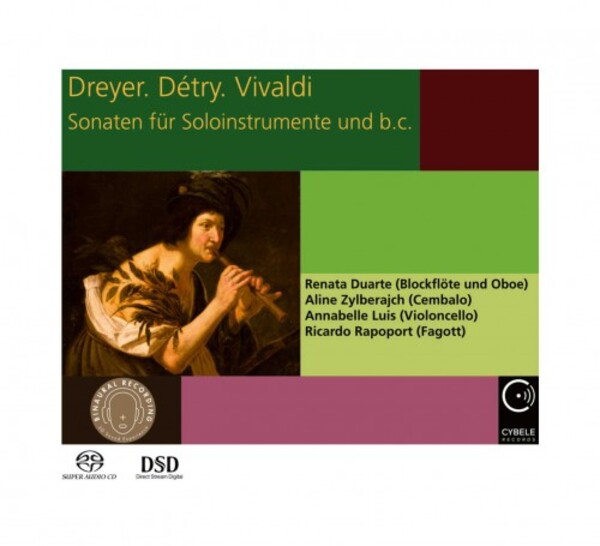
Dreyer, Detry & Vivaldi - Sonatas for Solo Instruments and Continuo
£15.15
In stock - available for despatch within 1 working day
Despatch Information
This despatch estimate is based on information from both our own stock and the UK supplier's stock.
If ordering multiple items, we will aim to send everything together so the longest despatch estimate will apply to the complete order.
If you would rather receive certain items more quickly, please place them on a separate order.
If any unexpected delays occur, we will keep you informed of progress via email and not allow other items on the order to be held up.
If you would prefer to receive everything together regardless of any delay, please let us know via email.
Pre-orders will be despatched as close as possible to the release date.
Label: Cybele
Cat No: CybeleSACD231904
Format: Hybrid SACD
Number of Discs: 1
Genre: Chamber
Release Date: 9th October 2020
Contents
Works
Recorder Sonata in C minorOboe Sonata no.2 in C major
Oboe Sonata no.5 in G minor
Oboe Sonata no.6 in A minor
Recorder Sonata in C major
Sonata in A minor, RV86
Artists
Renata Duarte (recorder, oboe)Aline Zylberajch (harpsichord)
Annabelle Luis (cello)
Ricardo Rapoport (bassoon)
Works
Recorder Sonata in C minorOboe Sonata no.2 in C major
Oboe Sonata no.5 in G minor
Oboe Sonata no.6 in A minor
Recorder Sonata in C major
Sonata in A minor, RV86
Artists
Renata Duarte (recorder, oboe)Aline Zylberajch (harpsichord)
Annabelle Luis (cello)
Ricardo Rapoport (bassoon)
About
Moreover, it is astonishing how the recorder, an instrument known throughout Europe, is totally uninhibited in appropriating all sorts of transcriptions just at the moment when it swiftly undergoes a keen renewal of interest among the protagonists of the stylistic experiments of the early 18th century: these words find a good example in the sonata by Louis Détry, a musician of unknown (French?) origin. His sonata recorded on this SACD, the only known manuscript by Détry, could be a transcription of a sonata for bassoon that the musician composed for his own purposes. It is a real “pasticcio sonata”, which in its own way combines the mixed style with fast movements “alla Vivaldi”, which are rhythmic and full of both contrasts and asymmetries, while making use of a German theme, and with slow movements whose role model is an absolutely French grace.
Antonio Vivaldi had a very special relationship with recorder and bassoon alike: the sonata on this edition is a sustained firework of concertante virtuosity, of the kind that Vivaldi uses only on special occasions in his late work. The instruments mimic each other, accompany and ignore each other, and share passages in which they connect for eternity, as in a recurring section at the end of the second movement, when the inevitable question becomes who will run out of breath first. The work covers broad territory, from theatre to introspective lyricism, without neglecting gallant showcases of technical wizardry or contrapuntal seriousness.
Reviews
 Proof that obscure need not mean second-rate.
Proof that obscure need not mean second-rate.Error on this page? Let us know here
Need more information on this product? Click here